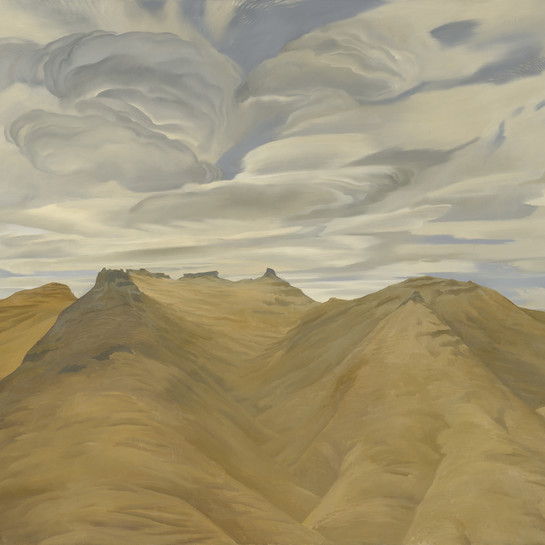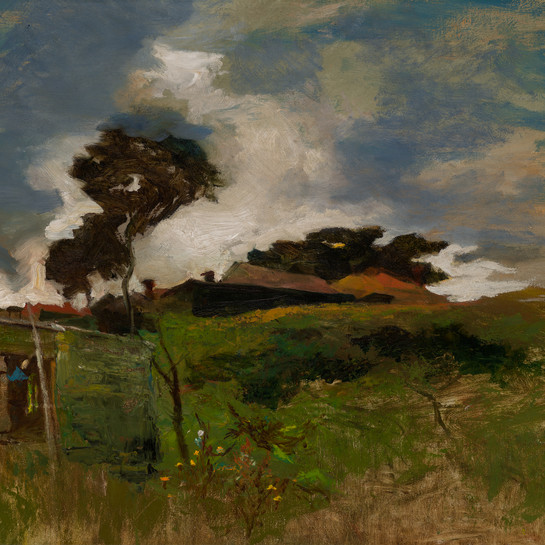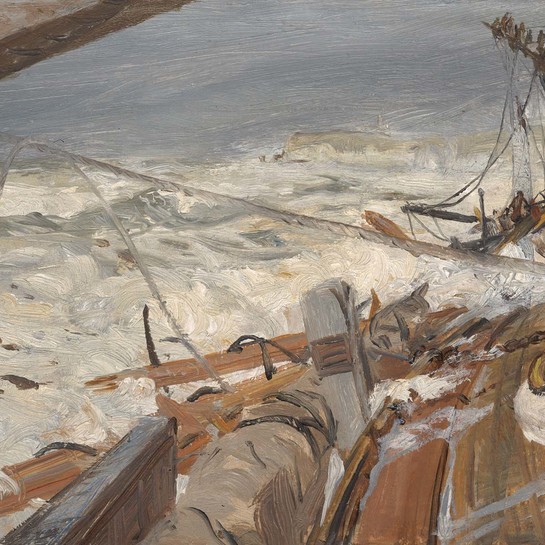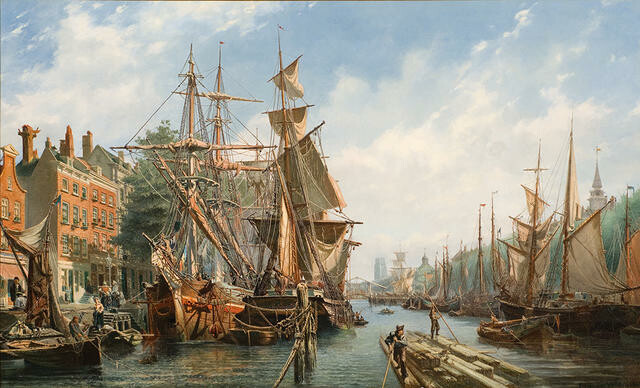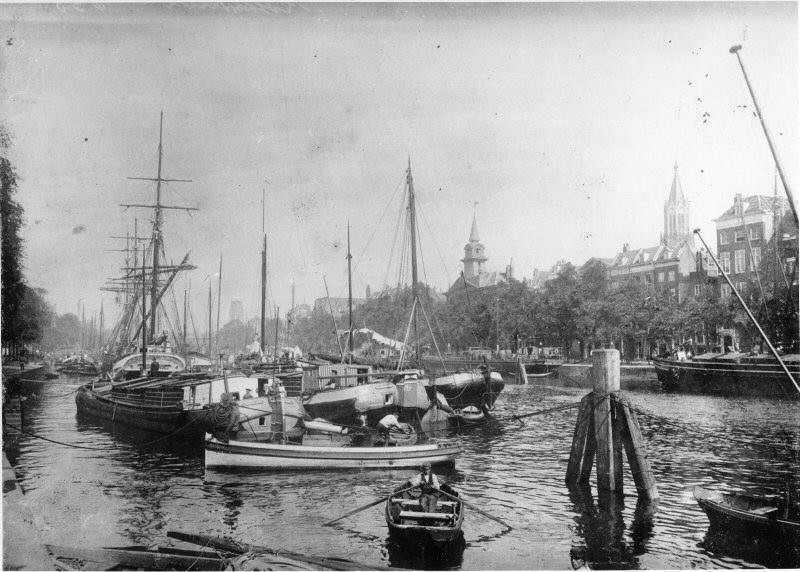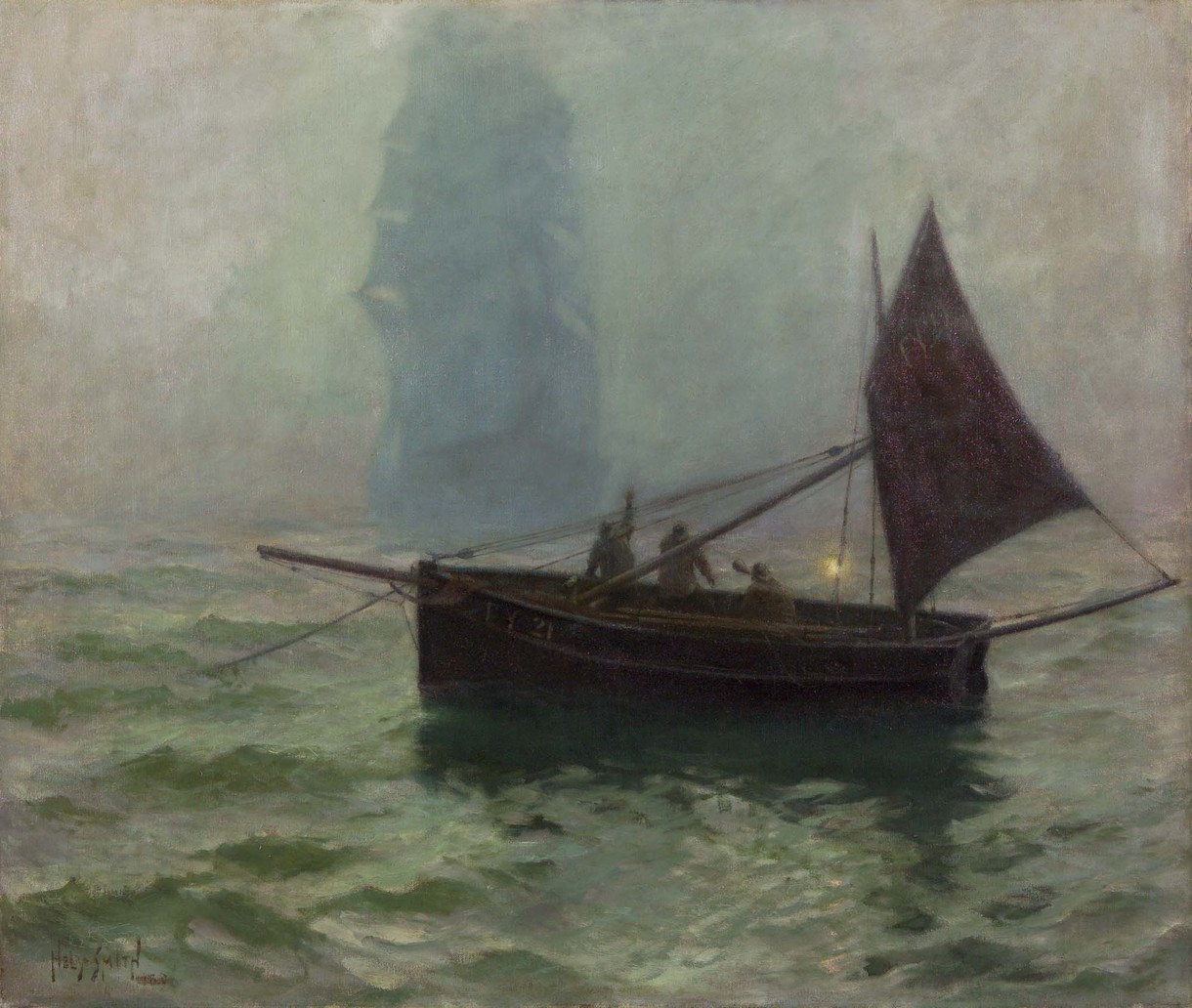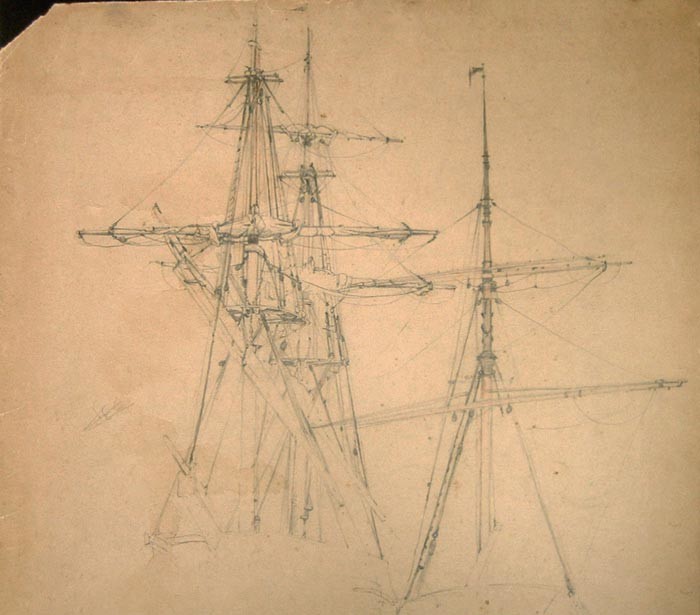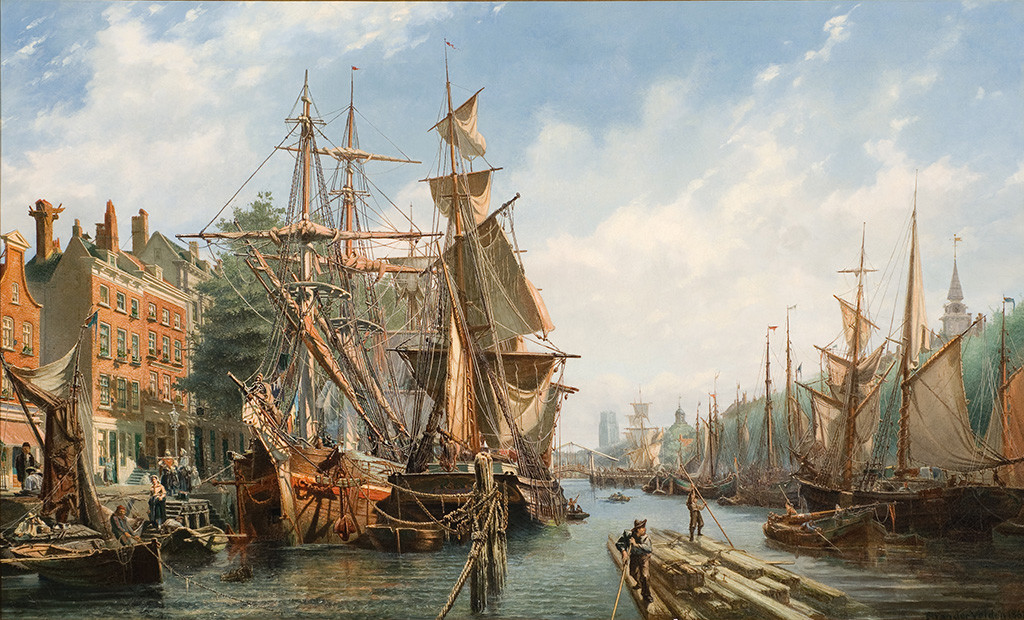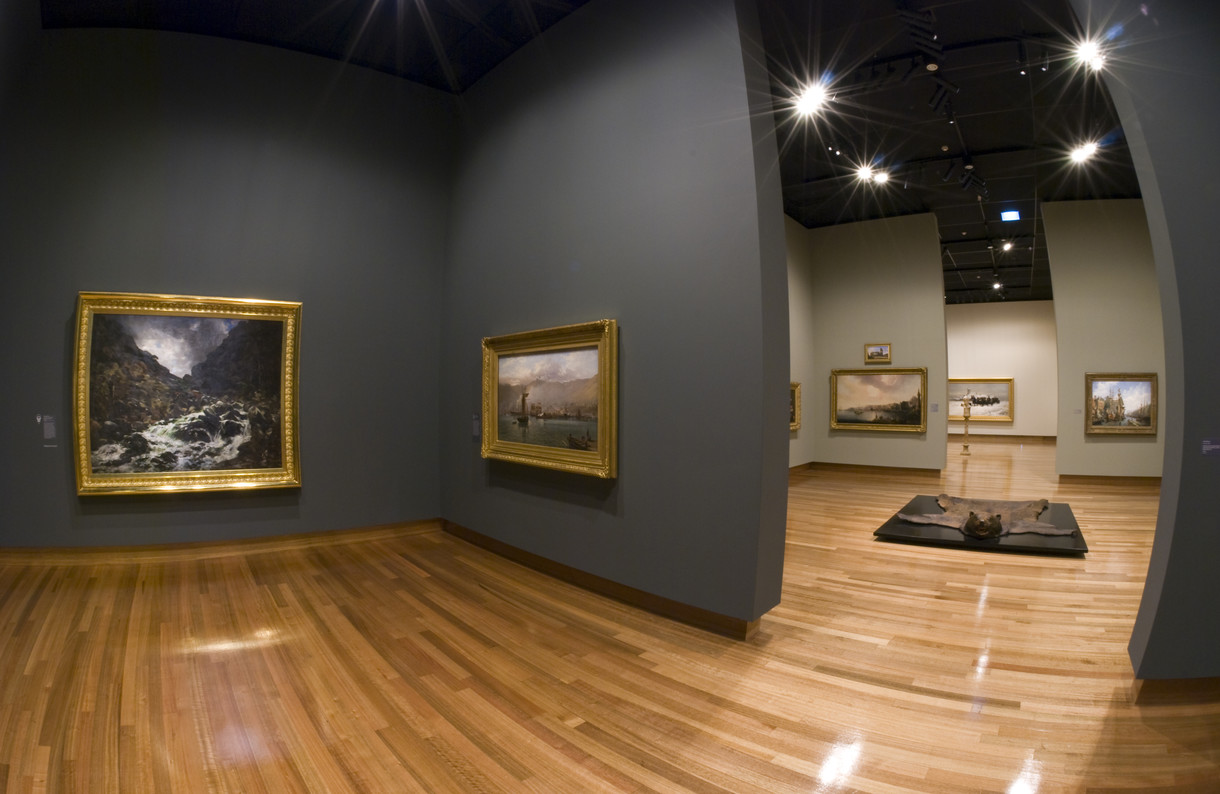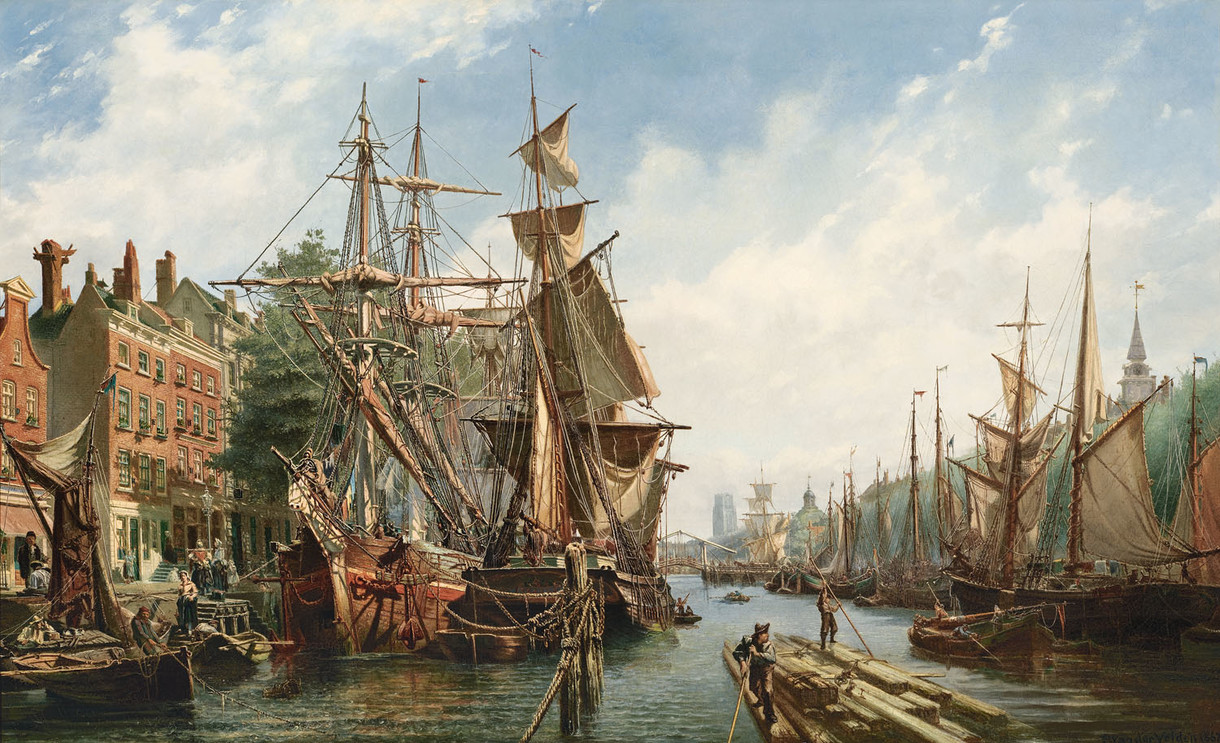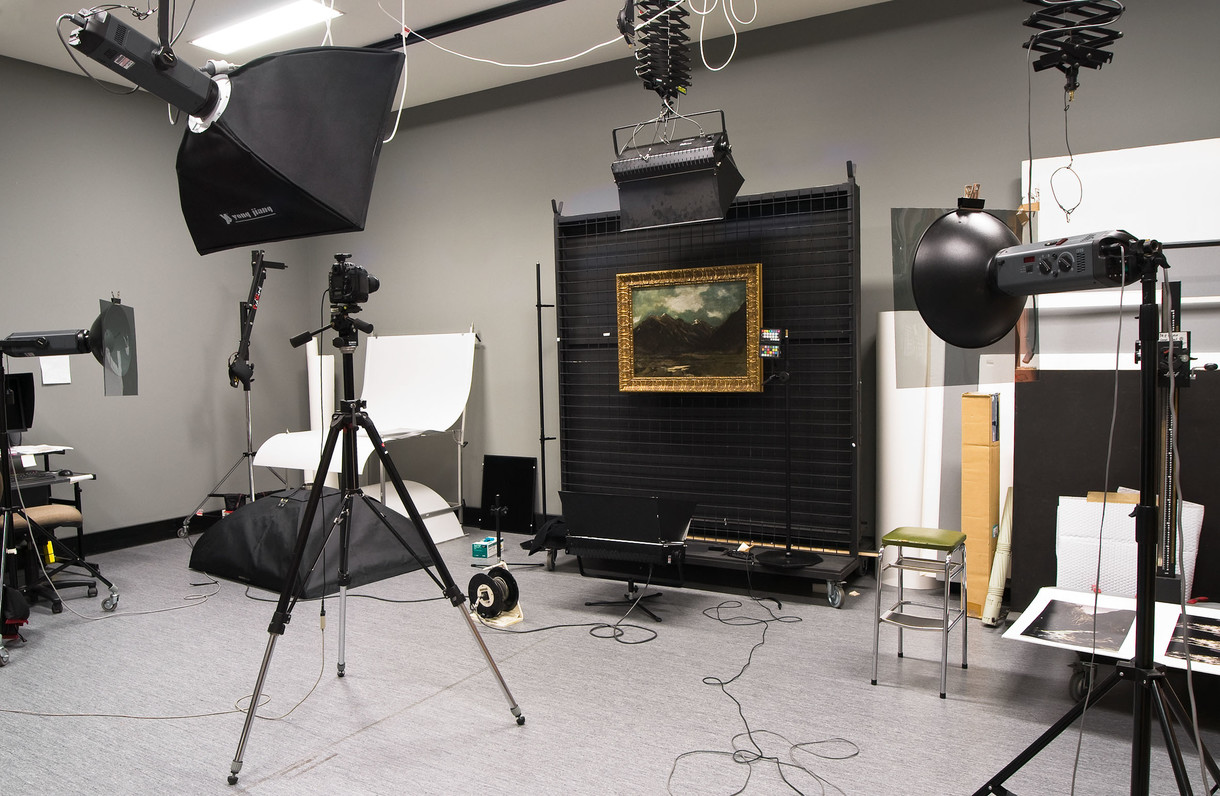Petrus van der Velden
Netherlands / Aotearoa New Zealand / Australia, b.1837, d.1913
The Leuvehaven, Rotterdam
- 1867
- Oil on canvas
- Purchased with assistance from Gabrielle Tasman in memory of Adriaan and the Olive Stirrat bequest. Purchase supported by Christchurch City Council's Challenge Grant to Christchurch Art Gallery Trust, 2010.
- 1079 x 1588mm
- 2010/004
- View on google maps
Tags: anchors (watercraft equipment), barges (flat-bottomed watercraft), boats, bridges (built works), buildings (structures), churches (buildings), clouds, cupolas, domes (architectural elements), flags, gables (architectural elements), harbors, people (agents), ports (settlements), religious buildings, rope, sails (equipment), seamen, ships, steps (stair units), towers (building divisions), towers (single built works), trees, urban landscapes, wharves
Petrus van der Velden turned to painting full-time in 1867 after six years as a struggling self-employed lithographer. “The first year was the hardest, and at the end I had done a picture; the harbour and the ships”, he later recalled. Exhibited in Rotterdam and then the Antwerp Salon, it sold to “an English gentleman … for 300 guilders [£25]. Quite a fortune!”
(Out of Time, 23 September 2023 – 28 April 2024)
The scene is the Leuvehaven, Rotterdam. A photograph of this area in about 1895 has been kindly supplied by the Stadsarchief Rotterdam (Rotterdam City Archives).
The square tower in the background has been identified as Sint-Laurenskerk (St. Laurence's Church), the domed building to its right is the Evangelisch-Lutherse kerk (Evangelical Lutheran Church) and the spire with the flag on top is the Brouwerij "De Twee Leeuwen" (the Two Lions brewery).
Of these three buildings, only St Laurence's Church survived the Second World War.
The Gallery thanks the Stadsarchief Rotterdam for supplying this information.
Exhibition History
New Dawn Fades, 10 November 2018 – 23 February 2020
Petrus van der Velden began his career as a commercial lithographer, where attention to detail was a crucial aspect of the job. There, his skills as a draughtsman were honed and he became adept at creating extremely detailed representations of towns and landscapes. In 1867, when he decided to become a painter, he was able to transfer these skills to his canvases as we see in The Leuvehaven, Rotterdam. Van der Velden’s accomplishment in conveying the details of the bustling harbour scene at the Leuvehaven is extraordinary. The rigging, sails and masts of various ships are represented in pinpoint detail, as are the people going about their daily business.
Reading the swell, 3 September 2016 – 6 February 2017
Petrus van der Velden’s training as a lithographer paid dividends when the artist decided to paint full-time in 1867, the same year this painting was completed. As a lithographer, van der Velden's attention to detail was paramount – a skill he brought to the keenly observed and painted ships of his maritime subjects. The docks and waterway of the Leuvehaven are bustling with ships being loaded and unloaded with cargo before setting out from safe waters for the high seas. Today, Rotterdam is still one of the busiest ports in the world.
![Andreas Cellarius Hypothesis Ptolemaica Sive Communis Planetarum Motus Per Eccentricos Et Epicyclos Demonstrans [The Ptolemaic Hypothesis or Common Representation Demonstrating the Planetary Motions through Eccentrics and Epicycles] 1661. Hand-coloured engraving. Collection of Christchurch Art Gallery Te Puna o Waiwhetū, William A. Sutton bequest, 2000](/media/cache/05/97/05970cdff0f6b3264062d69bf2aa90f5.jpg)
